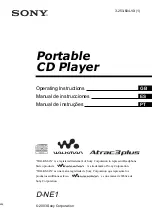
More specifically, a transparent bridge performs all of the following actions to learn
the network topology:
■
Learning—The bridge examines the MAC address of every incoming packet,
records the MAC address and associated interface in the forwarding table, and
manages the database of MAC addresses and their associated interfaces.
■
Flooding—When a packet’s destination address does not match any entries in
the forwarding table, the bridge transmits (floods) the packet on all bridge
interfaces to all network segments except the interface on which the packet was
received.
■
Forwarding—Once the bridge has learned a packet’s destination address (that
is, has a matching entry in its forwarding table), the bridge uses the associated
port and interface information to send the packet toward its destination.
■
Filtering—If the bridge detects that a packet’s source and destination addresses
are on the same network segment, it ignores (filters) that packet.
Filtering
is the
process by which the bridge can screen network traffic for certain characteristics
and determine whether to forward or discard (drop) that traffic based on
user-defined criteria. On E Series routers, filtering criteria can include the MAC
source address, MAC destination address, and protocol type.
■
Aging—When a bridge adds a dynamic (learned) MAC address entry to the
forwarding table, it assigns an age to the entry. The bridge updates this age each
time it receives a packet. To manage MAC entries more efficiently, you can
configure an entry’s aging time, which is the maximum time that an entry can
remain in the forwarding table before it “ages out.”
Bridge Groups and Bridge Group Interfaces
You configure transparent bridging by creating one or more bridge groups on the
router. A
bridge group
is a collection of network interfaces (ports) that forms a
broadcast domain. Each bridge group has its own set of forwarding tables and filters
and, as such, functions as a logical transparent bridging device. For information
about the maximum number of bridge groups that you can configure per E Series
router, see
JUNOSe Release Notes
,
Appendix A
,
System Maximums
.
After you create a bridge group, you associate one or more network interfaces with
the bridge group. This association is called a
bridge group interface
, or simply
bridge
interface
. For information about the maximum number of bridge interfaces that you
can configure per line module and per E Series router, see
JUNOSe Release Notes
,
Appendix A
,
System Maximums
.
Figure 43 on page 469 shows an example of a simple transparent bridging network
configuration that illustrates the concepts discussed so far in this section.
468
■
Overview
JUNOSe 11.1.x Link Layer Configuration Guide
Содержание JUNOSE 11.1.X - LINK LAYER CONFIGURATION 4-7-2010
Страница 6: ...vi...
Страница 8: ...viii JUNOSe 11 1 x Link Layer Configuration Guide...
Страница 26: ...xxvi List of Figures JUNOSe 11 1 x Link Layer Configuration Guide...
Страница 34: ...2 Chapters JUNOSe 11 1 x Link Layer Configuration Guide...
Страница 200: ...168 Monitoring Upper Level Protocols over Ethernet JUNOSe 11 1 x Link Layer Configuration Guide...
Страница 230: ...198 Monitoring VLAN and S VLAN Subinterfaces JUNOSe 11 1 x Link Layer Configuration Guide...
Страница 258: ...226 Monitoring 802 3ad Link Aggregation JUNOSe 11 1 x Link Layer Configuration Guide...
Страница 334: ...302 Troubleshooting JUNOSe 11 1 x Link Layer Configuration Guide...
Страница 394: ...362 Monitoring Multiclass MLPPP JUNOSe 11 1 x Link Layer Configuration Guide...
Страница 406: ...374 Monitoring POS JUNOSe 11 1 x Link Layer Configuration Guide...
Страница 468: ...436 Troubleshooting JUNOSe 11 1 x Link Layer Configuration Guide...
Страница 498: ...466 Monitoring Bridged Ethernet JUNOSe 11 1 x Link Layer Configuration Guide...
Страница 546: ...514 Monitoring Cisco HDLC JUNOSe 11 1 x Link Layer Configuration Guide...
Страница 747: ...Part 2 Index Index on page 717 Index 715...
Страница 748: ...716 Index JUNOSe 11 1 x Link Layer Configuration Guide...
Страница 774: ...742 Index JUNOSe 11 1 x Link Layer Configuration Guide...
















































